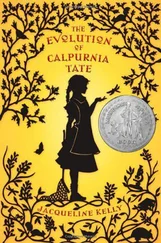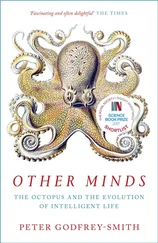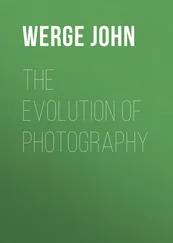Carroll Quigley - The Evolution of Civilizations
Здесь есть возможность читать онлайн «Carroll Quigley - The Evolution of Civilizations» весь текст электронной книги совершенно бесплатно (целиком полную версию без сокращений). В некоторых случаях можно слушать аудио, скачать через торрент в формате fb2 и присутствует краткое содержание. Год выпуска: 101, Издательство: Liberty Fund Inc., Жанр: Старинная литература, на английском языке. Описание произведения, (предисловие) а так же отзывы посетителей доступны на портале библиотеки ЛибКат.
- Название:The Evolution of Civilizations
- Автор:
- Издательство:Liberty Fund Inc.
- Жанр:
- Год:101
- ISBN:нет данных
- Рейтинг книги:5 / 5. Голосов: 1
-
Избранное:Добавить в избранное
- Отзывы:
-
Ваша оценка:
- 100
- 1
- 2
- 3
- 4
- 5
The Evolution of Civilizations: краткое содержание, описание и аннотация
Предлагаем к чтению аннотацию, описание, краткое содержание или предисловие (зависит от того, что написал сам автор книги «The Evolution of Civilizations»). Если вы не нашли необходимую информацию о книге — напишите в комментариях, мы постараемся отыскать её.
Like the course, The Evolution of Civilizations is a comprehensive and perceptive look at the factors behind the rise and fall of civilizations.
Quigley defines a civilization as "a producing society with an instrument of expansion." A civilization's decline is not inevitable but occurs when its instrument of expansion is transformed into an institution—that is, when social arrangements that meet real social needs are transformed into social institutions serving their own purposes regardless of real social needs.
The Evolution of Civilizations — читать онлайн бесплатно полную книгу (весь текст) целиком
Ниже представлен текст книги, разбитый по страницам. Система сохранения места последней прочитанной страницы, позволяет с удобством читать онлайн бесплатно книгу «The Evolution of Civilizations», без необходимости каждый раз заново искать на чём Вы остановились. Поставьте закладку, и сможете в любой момент перейти на страницу, на которой закончили чтение.
Интервал:
Закладка:
The irrationality to be associated with the second Age of Conflict might be sought either in the intellectual stage that preceded the Enlightenment or with the romantic movement that followed it. In the former case it would be associated with such items as the political theory of Hobbes and with Jansenism, while in the latter case it would be associated with the literary movements that began with Richardson or Macpherson's Ossian and developed into Rousseau, Sturm und Drang, Wordsworth, and others, or with the political theories of men like Burke, Fichte, Bonald, or DeMaistre, and the religious movements represented by Methodism. On the whole, it seems preferable, without being dogmatic, to associate the latter intellectual stage with the irrationalism we expect from an Age of Conflict. But, at any rate, the subject is too complicated to be discussed in any satisfactory way here.
7. Third Age of Expansion
The third Age of Expansion lasted from about 1730 to about 1929, although indications of a new Age of Conflict began to appear as early as 1890. Its instrument of expansion remained capitalistic, but operating in fields other than those that had become institutionalized in the earlier Age of Conflict of the late seventeenth century. The reappearance of expansion clearly resulted from circumvention of this previous organization. Again the period of expansion can be divided into substagesthat make the process of expansion appear as a series of steps or surges. We might list these steps as follows: (1) the agricultural revolution from 1730; (2) the Industrial Revolution from 1770; (3) financial capitalism from 1850; and (4) monopoly capitalism from 1900. Naturally the dates listed are very rough, because the advent of these steps is quite different in various areas.
We have already indicated the nature of the agricultural revolution as a reform of the institutionalized medieval three-field fallow system. Its roots go back many generations, but it began to operate as a significant, expansive force in England about 1730. It is, of course, one of the most important events in modern history.
Two revolutionary events of the later eighteenth century contributed a good deal toward the new Age of Expansion. These were the transportation revolution, which began about 1750, and the population revolution, which began about a generation later. The transportation revolution consisted of a series of innovations that provided (a) an effective traveling coach; (b) hard-surfaced, all-weather roads; (c) canals; (d) telegraphic communication; and (e) railroads. All these appeared in the century 1750-1850. In the following century the revolution in transportation and communications continued with the advent of (f) high-speed printing presses; (g) the internal-combustion engine, leading to automobiles and airplanes; and (h) electricity, leading to radio, the motion picture, and television.
The population revolution began about 1780 with the use of vaccination for smallpox. It continued with the discovery of germ infection and the invention of antiseptics by Pasteur and Lister, as well as improvements in surgery such as the discovery of ether. Advances of this kind have continued with accelerating rapidity and have given rise to a population "explosion" resulting from a drastic reduction in death rates far sharper than the slight decreases in birthrates. The transportation and population revolutions occurred most conveniently between the agricultural and Industrial revolutions in Western civilization, each of the four providing a sound basis for the next. This was quite different from the experience of the non-Western world where these, and other, revolutionary advances diffused in a quite different sequence that was far better fitted to raising problems than to solving them.
The Industrial Revolution, which we have defined as production by energy coming through nonliving mechanisms (that is, from water power or steam rather than from men or animals), is familiar to all of us. Accordingly, we shall refer only to certain organizational features that help to distinguish its early period of owner-management from its second period of financial capitalism. In the former the typical pattern of organization was the private firm or partnership with both capital and decision making supplied by the owners. In the latter the typical form of organization was the limited-liability corporation and the holding company, in which capital came from the owners but decision making came from the management. As is well known, the Industrial Revolution first flourished in textiles using either water power or steam engines. Even when it spread into mining and ironmaking, the older form of proprietorship or partnership continued to prevail. But gradually it spread into the activities of the still-expanding transportation revolution. There, in canal building and, above all, in railroad building, it became impossible to continue to use the partnership form of business organization because the needs for capital were far greater than could be satisfied by the savings of any group of partners. The corporate form of enterprise was adopted for these activities because it could mobilize the savings of many in the control of a few and do so with limited liability for the many. First used on a large scale in railroads, it soon spread into coal mining, ironmaking, and machine building.
This change led to the period of financial capitalism that began about 1850 and died a violent death about September 1931 with the collapse of the international gold standard. As the period developed, the need for capital by corporations became so great that specialized capital-raising organizations appeared. These investment bankers, in return for their services, obtained representation on the boards of directors of corporations and sufficient influence to direct their companies' financial services and purchases toward other corporations where the particular investment bankers concerned had interests. From this there grew up a network of interlocking directorships and banking influences and, finally, an elaborate system of holding companies and financial firms. These growing monopolistic influences were centralized by the joint concern which all financiers had in keeping the value of money high (or "stabilized," as they called it). This joint concern was reflected in the appearance of a joint organization, the central bank, which held the gold reserves that became the central feature of the monetary system. The international gold standard became the chief mechanism by which the supply of money could be kept low and its value, accordingly, kept high. A high value of money, which implies a low supply of money, was chiefly advantageous to creditors, to whom obligations were owed in money terms. But such a high value of money clearly meant low prices of goods, and was a disadvantage to debtors and to manufacturers of goods.
Thus there appeared a dichotomy between bankers and industrialists, with one eager for a high value of money and high interest’s rates, while the other was eager for high prices of goods (thus low value of money) and low interest rates. For a long time, the dichotomy between the two did not come into the open because bankers succeeded in befuddling industrialists on financial matters, presenting them as abstruse subjects in which the industrialist's wisest course would be to follow his banker's advice. As long as the industrialist was dependent upon the banker for capital, he had to use that advice, even when he sometimes suspected that the interests of the two were not identical. But few industrialists before Henry Ford even realized that the interests of bankers and industrialists were opposed.
This opposition of interests between the two appeared most clearly when there was an insufficient supply of money for the growing industrial structure. This insufficient supply of money was based on the insufficient supply of gold, since the bankers controlled the supply of money through the mechanism of the gold standard. The bankers called the use of the gold standard "stabilization," and insisted that it provided a stable value to money; it did no such thing, but rather provided stable foreign exchanges (for all currencies based on gold) and a growing value to money. The growing value to money on the gold standard occurred because the supply of money could not increase as rapidly as the supply of goods when the former was based on output of the world's gold mines and the latter was based on the much more expandable industrial system. Accordingly, the overall tendency was for prices to soften during the whole period 1770-1931 except when there were sudden increases in the world's gold supplies (notably in 1848-52 and 18961904) or when political events, such as wars, made it necessary to suspend the gold standard or to destroy quantities of goods, as in 1792-1815, 1861-72 and 1914-19. Outside these exceptional events, the general tendency of the price history of the third Age of Expansion was deflationary (as was evident in 1816-48, 1872-96, 1920-33). This tendency led, in each deflationary substage, to growing depression and to increasing agrarian and labor unrest associated with such historic labels as the "hungry forties," the "Populist movement," and the "great world depression." The tendency generally benefited bankers and injured industry by increasing the value of money and the costs of credit and making profitable industrial operations more difficult (since falling prices force businessmen to incur costs on an earlier and higher price level than that on which they must subsequently offer their product for sale). In these deflationary periods, as low prices drove corporations to bankruptcy, bankers were able to assume control of them, to consolidate them into larger units of monopolized industry, and to reap the profits of reorganization and refloatation of securities. Although industrialists and businessmen generally accepted the bankers' justifications of these events, debtors (especially farmers) and workers (who suffered unemployment) were increasingly resentful. The first deflationary period, leading to the disturbances of the late 1840s, and the second, leading to the disturbances of the early 1890s, were both ended by the discovery of new gold supplies, in California and Australia in 1848-50 and in South Africa and the Klondike in 1897-1900. In addition, the supply of gold, in the second case, was increased by new methods of extracting gold from its ores. But none of these occurred in the third deflationary period, 1919-31, and financial capitalism, long threatened by its own creation, monopoly capitalism, perished in 1931— 33. As a consequence, the domination of economic life by financial figures, such as Rothschild, Morgan, Mirabaud, Baring, Montagu Norman, or even Ivar Kreuger, was ended and replaced by great figures of monopoly capitalism like DuPont, Melchett, Leverhulme, Rockefeller, Ford, Nuffield, and others. In this connection, however, it should be pointed out that the typical figure of monopoly capitalism is not the individual "captain of industry" of the earlier period but the anonymously managed superfirm like United Shoe Machinery, I. G. Farbenindustrie, Unilever, DuPont Chemicals, Hartford-Empire, Alcoa, Volkswagen, Pecheney, General Motors, General Electric, or General Dynamics. It should also be noted that the generally deflationary character of the nineteenth century had certain beneficial aspects, such as wider distribution of goods at lower prices and, above all, the drastic need to lower costs of production by greater productive efficiency in order to ensure continued profits in a soft-price era. These two aspects of the period explain why the nineteenth century remained an Age of Expansion in spite of its adjustment difficulties.
Читать дальшеИнтервал:
Закладка:
Похожие книги на «The Evolution of Civilizations»
Представляем Вашему вниманию похожие книги на «The Evolution of Civilizations» списком для выбора. Мы отобрали схожую по названию и смыслу литературу в надежде предоставить читателям больше вариантов отыскать новые, интересные, ещё непрочитанные произведения.
Обсуждение, отзывы о книге «The Evolution of Civilizations» и просто собственные мнения читателей. Оставьте ваши комментарии, напишите, что Вы думаете о произведении, его смысле или главных героях. Укажите что конкретно понравилось, а что нет, и почему Вы так считаете.










